
These days, traditional marketing strategies just don’t cut it. With common advertising techniques yielding suboptimal results, it’s clear younger demographics aren’t as receptive to the strategies of yesteryear. Print, radio, and even television marketing have consistently declined in R.O.I, and social media advertising has grown to the point of over-saturation.
That’s why you need to adjust the methods you use to reach potential customers. The best way to do this is by developing an experiential marketing strategy. Experiential marketing is a cutting-edge guerrilla marketing tactic, designed to engage consumers and form a long-term emotional bond with your brand.
Experiential marketing, also known as engagement marketing, is a strategy that utilizes direct contact with a customer as a means to establish a strong connection between that customer and your brand. This contact acts as a way for the consumer to experience how their life could benefit from your product or service, and encourages organic growth of brand-awareness.
The way this growth comes about is by providing an experience so engaging, the customer wants to share it with other people (either in-person or via social media). In this way, you get far more bang for your buck than with traditional marketing. If you can have someone associate positive feelings with your brand, to the point where they feel compelled to tell others, that effect will multiply and result in further brand activations.
Experiential marketing allows customers to see the human element behind a product or business. This has shown to be quite effective in fostering an emotional connection with a brand, and these tend to outlast the more shallow connections formed through traditional advertising. A smiling face, sincere enthusiasm, and real physical interaction with a product can all make a huge difference in creating long term, loyal patronage.
The way you go about designing this brand experience depends entirely on what your product or service is, how you want to be seen by the public, and what your activation goals are. While the possibilities are endless, there are a few tried-and-true experiential marketing strategies you can use as the foundation for your campaign.
There is a wide range of different avenues to explore when developing your experiential marketing strategy. Here are several different types of strategies, and how they can function to boost brand activations.
The way you develop your experiential marketing strategy relies heavily on the image of your brand. You need to fully understand who your customer base is and what they want. Designing an experience that plays to these desires can help foster the emotional connection you are shooting for. You want a potential consumer to experience how their life could benefit from a relationship with your brand.
Let’s take one of the above methods, and apply it to a fictional coffee brand to see how it would function.
If your coffee brand is looking to create an experiential marketing strategy, a good choice would be to create a pop-up café.
As a lower-cost item, coffee is an easier sell than a piece of technology or clothing. While a high-end fashion company may benefit from a brand booth, most customers are willing to shell out a few dollars to try a new brand of coffee. Allowing a customer to smell and taste the product in a coffee shop type setting will create that positive experience you are aiming for.
Having a temporary storefront, with eye-catching visual branding drawing people in, is a great way to get your product into the hands of potential long-term customers. Then, when the pop-up shop is gone, this customer will naturally look for your brand in stores to recreate those feelings of positivity.
This is just one of a nearly infinite number of possibilities for combining your unique brand with a complimentary experiential marketing method. The ability to tailor the brand experience you provide to consumers is the largest benefit of developing an experiential marketing strategy. That, and many other reasons, are why it should be a primary technique in your marketing campaign playbook.
One of the major reasons experiential marketing is so effective is because these kinds of face-to-face campaigns are completely customizable. If you’ve never developed your own brand activation concept, don’t worry. Our team can help you brainstorm an experiential marketing campaign that is tailored wholly to you, considering your desired target audience, budget, market, and other preferences you may have.
Learn more about our experiential marketing agency and contact us today to get started.
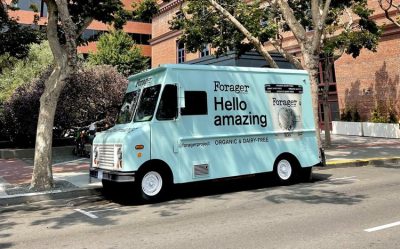
“The purpose of life is to live it, to taste experience to the utmost, to reach out eagerly and without fear for newer and richer
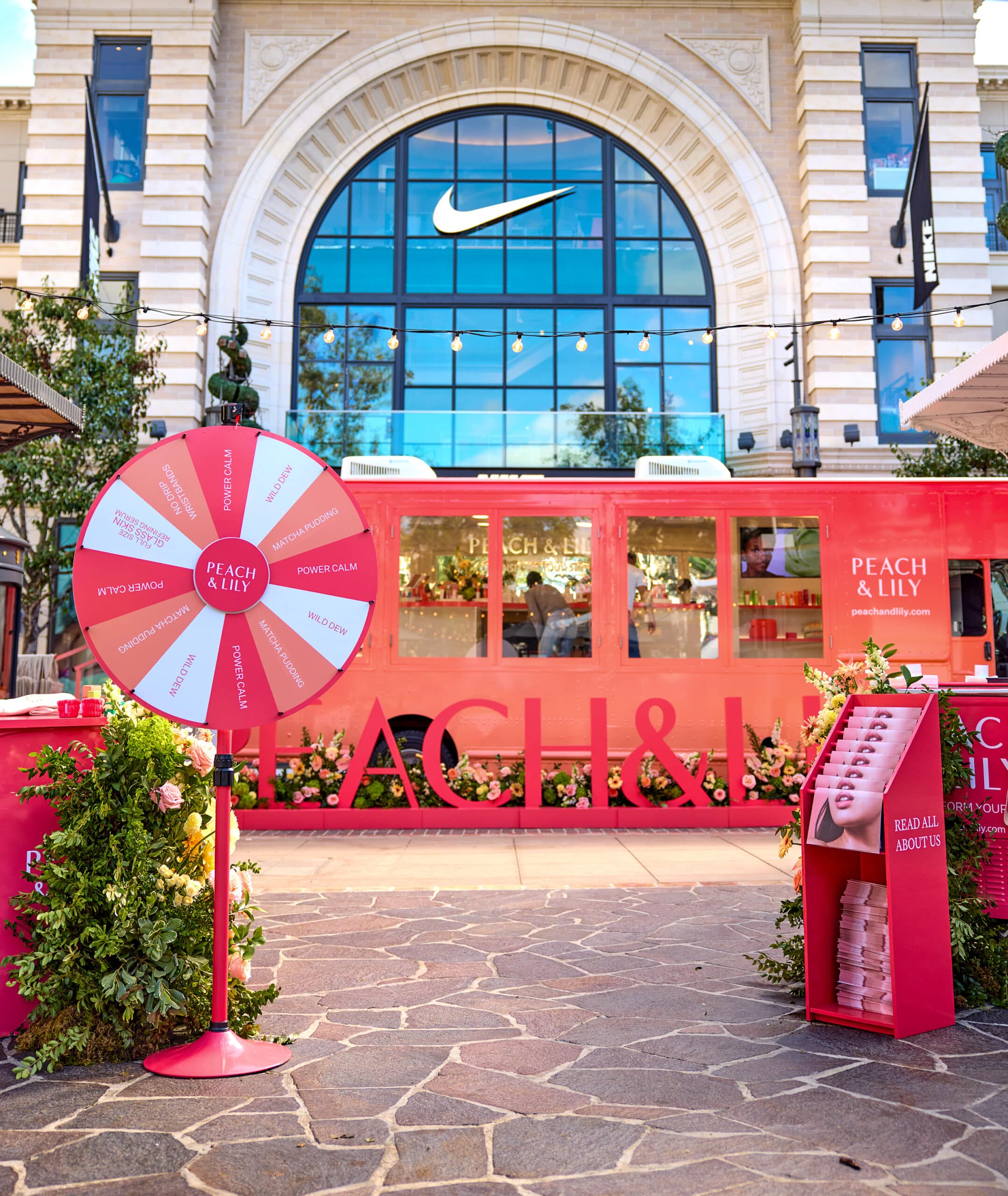
It’s been a big year here at Food Truck Promotions. With the holidays on the horizon and the new year quickly approaching, we’ve been looking
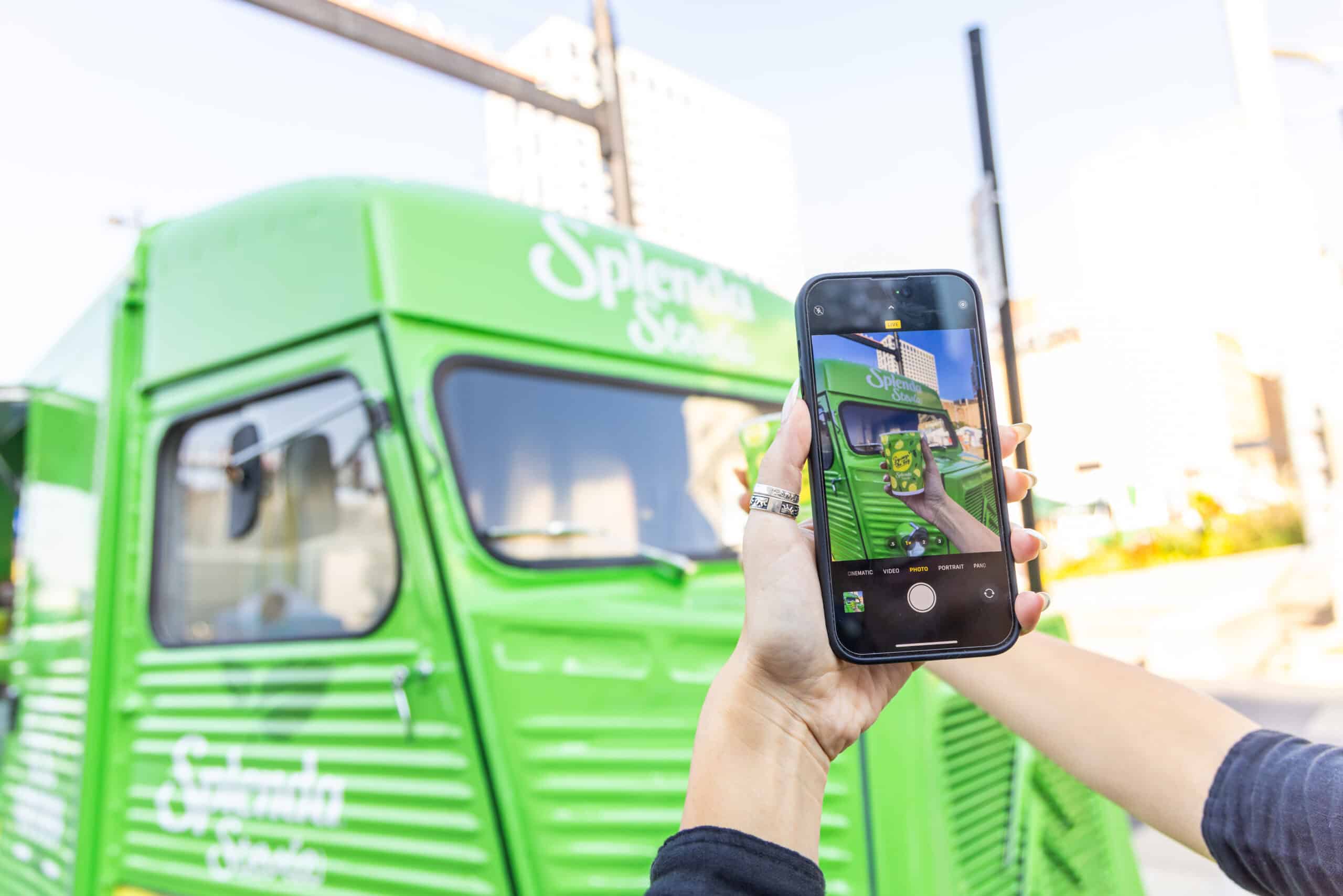
Why UGC is a Key to Successful Modern Marketing If you are interested in modern marketing, you already know that the advertising world has dramatically
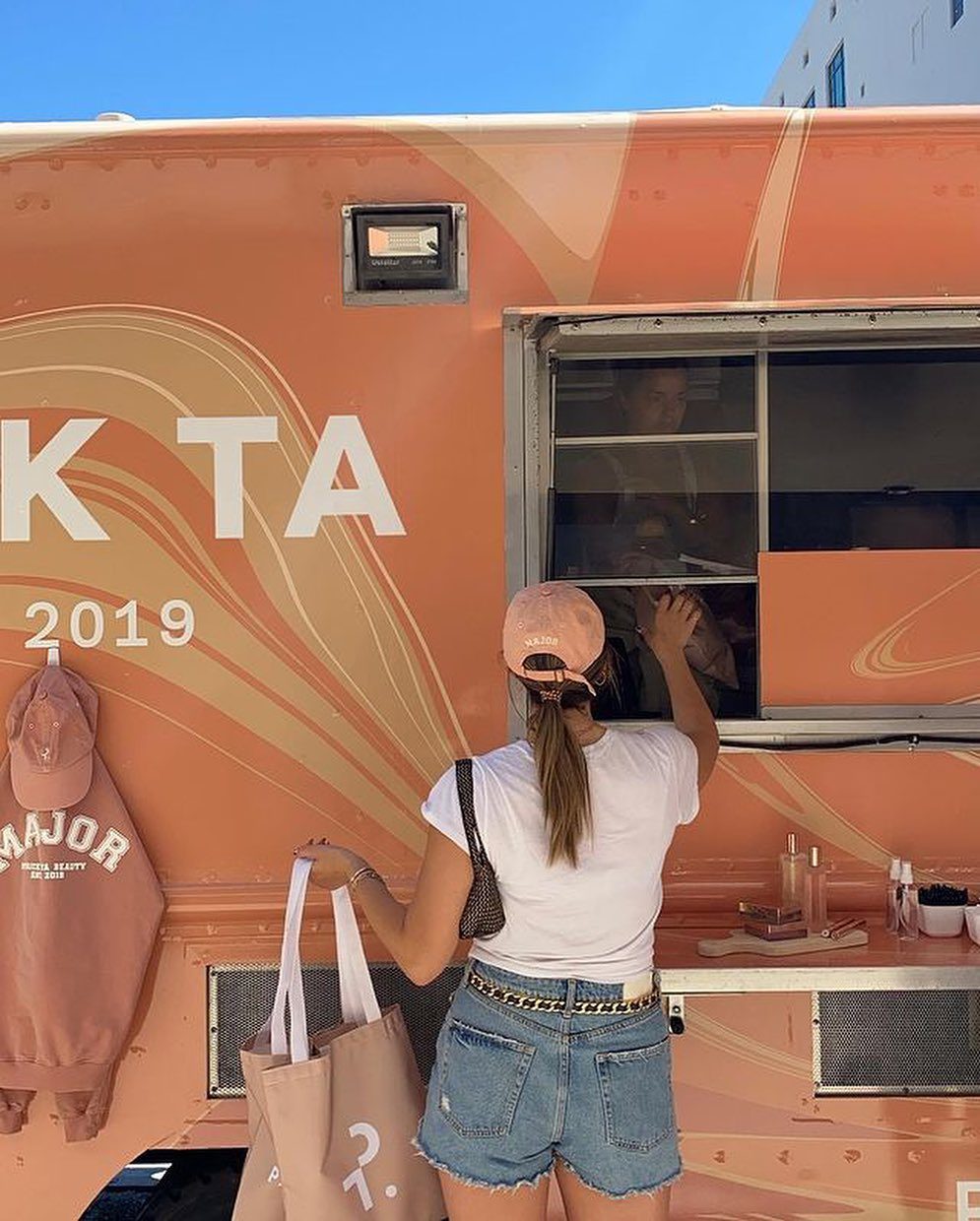
When renting a pop-up shop space, it’s important to understand what your options are. Choosing between a static and mobile pop-up shop rental means gathering a comprehensive knowledge of both, and knowing the advantages and disadvantages of each.
While a pop-up shop can be the cornerstone of a solid experiential marketing campaign, choosing the correct format can make or break how effective your particular campaign will be.
A static pop-up shop rental is a stationary and temporary storefront that your brand can utilize for a set period of time. These are the more traditional version of pop-ups, and are usually part of an existing building or structure. These can also take the form of a branded pop-up tent, usually set up in high-traffic areas.
While a static pop-up shop can be helpful in building brand awareness and increasing sales, it only does so in one small area. This lack of mobility can lower the quantity of brand activations your pop-up shop achieves, and be a drain on valuable marketing resources.
A mobile pop-up shop rental simply takes the concept of a static pop-up shop, and puts it on wheels. These can take a variety of forms, depending on the brand they represent, and the product or service that brand offers. Food trucks are an excellent mobile pop-up for food and beverage brands, while clothing companies may offer a walk-in vehicle where consumers can try-on and purchase different garments.
No matter what form of mobile pop-up shop rental you choose, you’ll likely have a better experience and higher R.O.I compared to their stationary counterpart. There are countless benefits to choosing a mobile pop-up shop rental, and each can be a massive boost to brand activations and recognition.
A mobile pop-up shop rental has several distinct advantages over more traditional advertising techniques. This cutting-edge form of experiential marketing is a great way to allow a customer hands-on experience with a product or service, and an experience that will get them to talk about your brand to their friends. This creates organic brand awareness, and can help spread your name far beyond the scope of a print or television advertisement.
The ability to identify highly-populated areas containing your brand’s key demographic, and target those areas with a mobile brand experience, can be an invaluable boost to consumer engagement.
Once you know where the highest percentage of your potential customer base resides, you can make sure your mobile pop-up shop rental is directed to these areas. This decreases the chance of wasting valuable time with consumers who aren’t interested in the product, and increases the volume of positive brand activations and sales.
In an increasingly digital world, physical engagement can make the difference in forming long-term emotional connections with potential customers. Having brand ambassadors there to guide a consumer through the brand experience, answer any questions, and help them to actually use the product or service, is invaluable.
Younger demographics are also more likely to form a connection to a brand if they can physically interact with their product or service. Getting to test out what our brand offers directly lets them more clearly understand what the benefits of that product or service are.
A mobile pop-up shop rental will be distinctly marked and painted to represent your brand. These eye-popping visuals are designed to ensure you draw the attention of not only those passing by the pop-up when it’s parked, but while it’s moving through a populated area.
Because you are in or near a place populated by your key demographic, everyone who sees this vehicle pass by will have their curiosity piqued. This can lead to more foot traffic once the pop-up is stationary, and more connections made to the brand itself.
There are several steps to take to ensure that your mobile pop-up shop rental is successful. From choosing how it looks outside, the experience contained inside, and where it’s headed, each step is vital to securing the brand activations necessary to increasing awareness.
The first thing potential customers will see is how the outside of your mobile pop-up shop rental looks. It only takes seven seconds for a person to form an impression when they meet someone for the first time; imagine how quickly they will judge your brand.
There are many different styles you can go with when choosing a mobile pop-up shop rental. Your mobile pop-up shop aesthetic should align with the demographic your brand targets. If you are trying to tap into nostalgia, you can go for a “old-timey” feel to your vehicle. If you are trying to show off the cutting-edge of technology, you’ll want something sleek and futuristic.
Remember, first impressions are everything, and if a potential consumer doesn’t like how your pop-up looks on the outside, they are unlikely to care what is on the inside.
Designing how the customer will interact with your product or service is arguably the most important decision of your campaign. What mobile pop-up shop ideas you use depend on what experience best represents your brand. Here is an example of a brand specific experience you could use for your mobile pop-up shop rental.
If you are an outdoors or camping brand, you’ll want to have demonstrations of how your product would work in a wilderness setting. A camping trailer, equipped with astroturf and the scent of cedar, can make a potential consumer feel as though they are already in the forest, utilizing your product.
You want the consumer to feel as if the purchase is already made, by allowing them to envision the life they could have if they choose your brand. Try to understand the smell, touch, taste, and feel of what your brand embodies, and pour that sensory data into the experience your pop-up shop facilitates.
You’ll need to know how to find a pop-up shop space that includes as many members of your key demographic as possible. Each stop you make with your mobile pop-up shop rental should be filled with people likely to not only understand your product, but directly benefit from a connection with your brand.
Events with high foot traffic such as conventions, fairs, and other well-populated events are great choices for a stop in your mobile pop-up shop tour. If you choose spots in large cities, try to get as close to downtown or near business centers as you can. The more people who pass, the more chances you have to make those brand activations and sales.
Using this information, it should be easy to design how exactly you will use your mobile pop-up shop rental. Using this experiential marketing strategy, you are certain to drastically improve brand awareness, and give potential consumers an exciting experience in the process.

“The purpose of life is to live it, to taste experience to the utmost, to reach out eagerly and without fear for newer and richer

It’s been a big year here at Food Truck Promotions. With the holidays on the horizon and the new year quickly approaching, we’ve been looking

Why UGC is a Key to Successful Modern Marketing If you are interested in modern marketing, you already know that the advertising world has dramatically
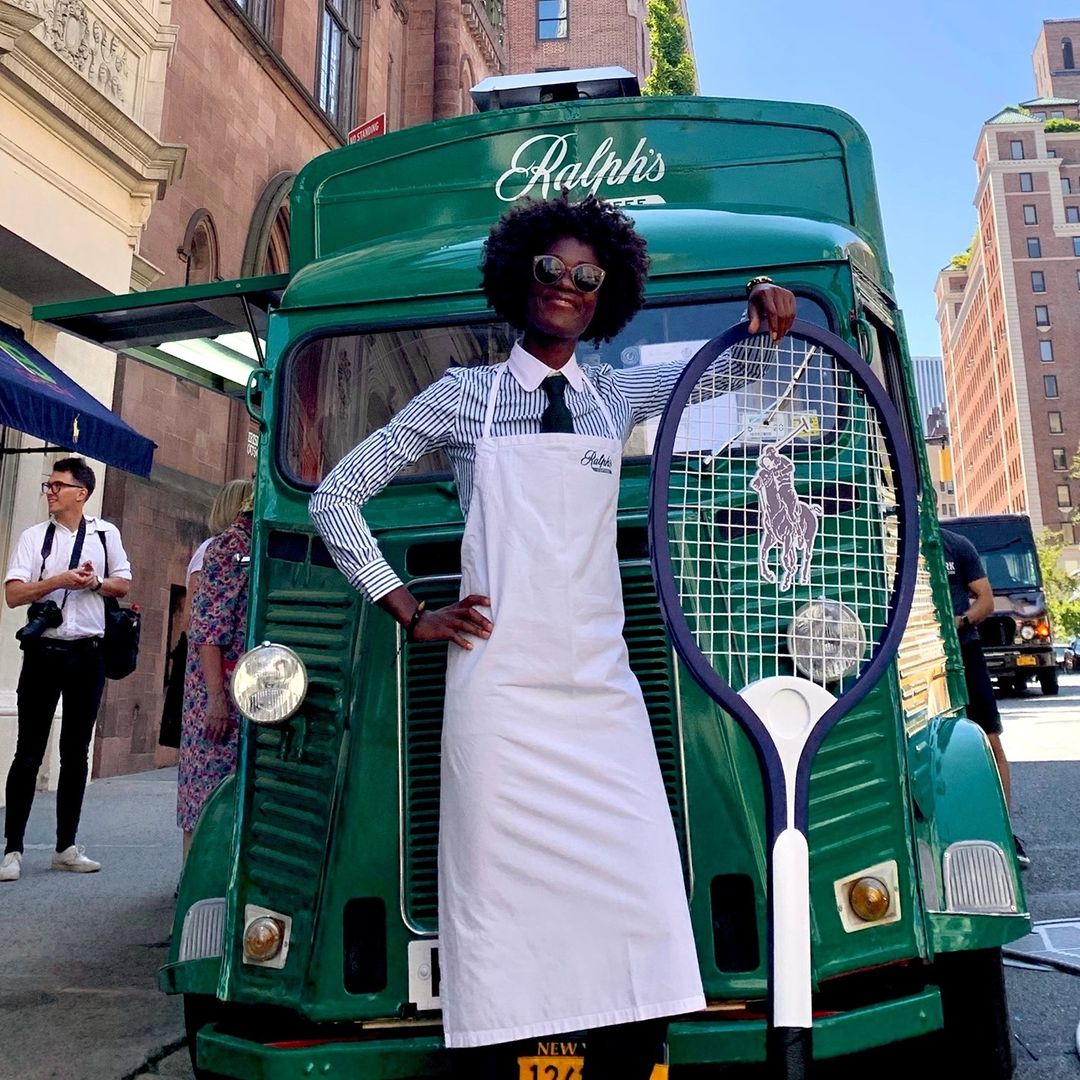
When it comes to crafting an experiential marketing strategy, mobile tours are a high-efficacy tool guaranteed to help expand the reach of your brand. One of the most important steps to take when planning an experiential marketing mobile tour is making sure you choose the correct mobile tour brand ambassador. But what exactly is mobile tour marketing, and how can it work for you?
Mobile tours are an experiential marketing tool that lets you advertise your brand to thousands of people in a key demographic area, while also allowing potential consumers to experience the benefits of your product or service first-hand. With many advertising strategies, the customer can only imagine what their life could be like if they went with a certain brand. With a mobile tour, they don’t have to imagine, they can live it.
There are countless advantages to employing this strategy, especially when you utilize the expertise of mobile marketing tour companies. When a mobile tour vehicle is driven through a city, separate impressions and connections are made with each person it passes. These mobile brand activations are valuable, but only a small part of what mobile tours have to offer.
Once the tour reaches one of it’s intended stops, this is where the real engagement begins. Mobile marketing tour companies carefully choose spots containing members of your key demographic. This means that you have a higher rate of conversion with mobile tour activations. A mobile tour vehicle unfolds into a multi-tiered piece of experiential marketing, allowing potential consumers to be enveloped in a fully interactive brand experience.
But all of this hinges on a very important factor: choosing the best mobile tour brand ambassador.
A good mobile tour brand ambassador is the foundation for all high-quality experiential marketing mobile tours. If you want the highest return on investment for your marketing dollar, you need to make sure you employ the absolute best ambassador you can find. To do this, you need to know exactly what an ambassador does.
The role of a mobile tour brand ambassador is to put a face to your brand, and help guide a potential customer through the brand experience packaged in your mobile tour. These are the staff you have working the booth, interacting with customers, demonstrating what your brand has to offer. These individuals are there to make sure your key demographic establishes an emotional connection, increasing the chances they will become loyal customers.
Mobile brand tour ambassadors can be regular staff members, or social media influencers in your industry. Whichever type of ambassador you go with, it’s important they have a distinct set of qualities.
Now that you know what a mobile tour ambassador does, you need to know how to find the right fit for your unique brand. These will be the people wearing your logo and displaying your products or services: in essence, they will be representing you. You need to make sure that the connection potential consumers make is a positive one, and encourage these consumers to further spread your brand name through social media and word-of-mouth.
Let’s go over the qualities that any mobile tour ambassador must have, regardless of brand. You need to make sure that your ambassador is:
Now depending on what your brand specifically offers, you will want to tailor your mobile tour brand ambassador to the experience you want consumers to have. If you can, try to find well-known members of your industry that can help represent the goals of your marketing strategy, and the ideals of your brand.
Social media influencers are usually open to sponsorship, and can be a vital asset in expanding the reach of your campaign. When you choose these individuals, or any ambassadors working directly with the mobile tour, you need to choose people who are perfectly tailored to your brand’s message.
If you are a health food brand, you will want to make sure the ambassadors you choose are healthy and fit. If you are a brand that deals with men’s products, you will want someone who fits the stereotypical archetype of a “man’s man”. You want your ambassador to be the embodiment of the benefits of your product or service: make the potential consumer look at that person, and say “I want to be them.”
If you follow these steps, you will be sure to choose the correct mobile tour brand ambassador for your brand. Once that important piece is in place, you can ensure the success of your mobile marketing campaign, and get the name of your brand out to countless potential consumers.

“The purpose of life is to live it, to taste experience to the utmost, to reach out eagerly and without fear for newer and richer

It’s been a big year here at Food Truck Promotions. With the holidays on the horizon and the new year quickly approaching, we’ve been looking

Why UGC is a Key to Successful Modern Marketing If you are interested in modern marketing, you already know that the advertising world has dramatically
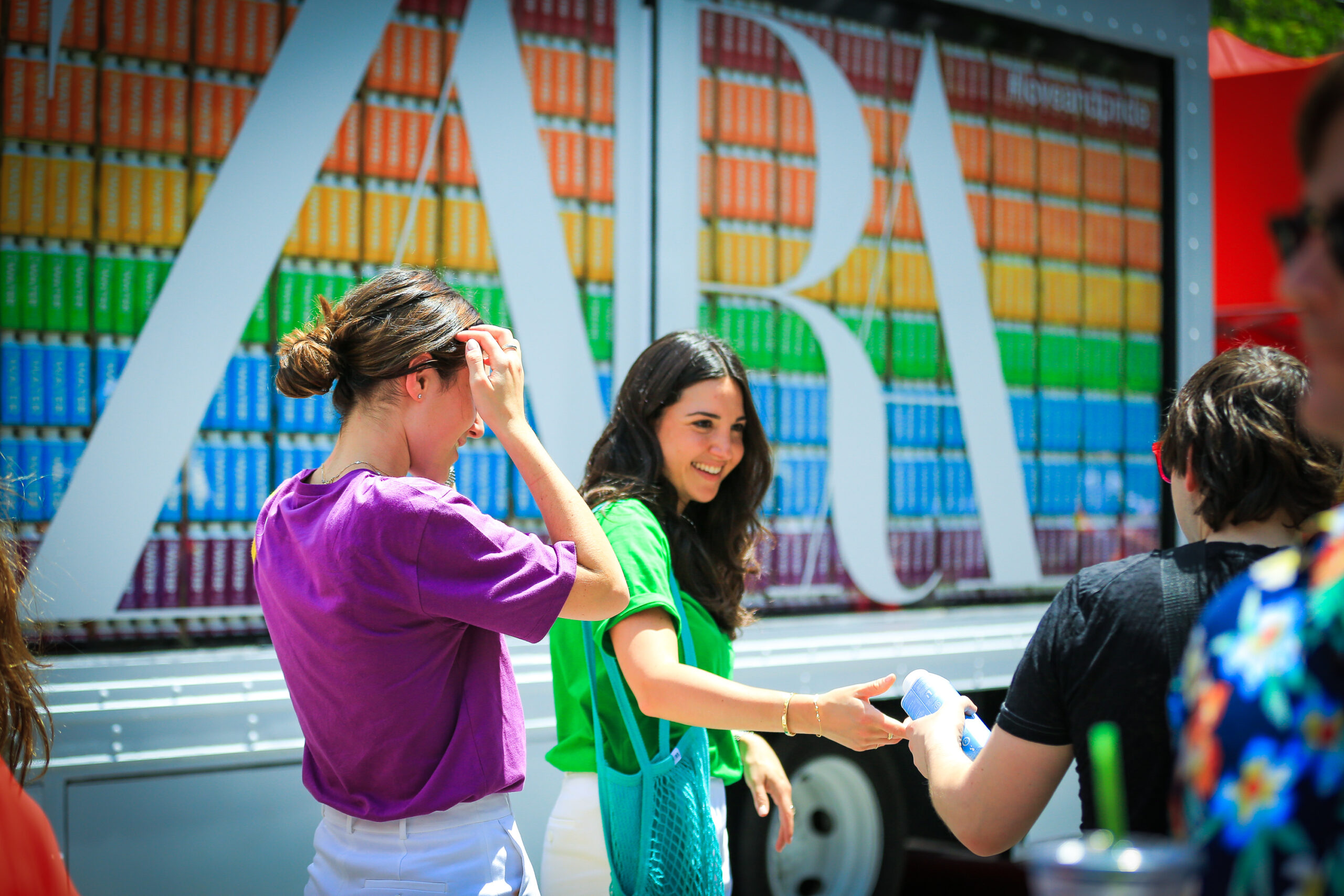
In today’s fast-moving world, you need a multi-dimensional marketing strategy that can engage the tastes of modern consumers. While traditional media marketing still has its functions, it pays to stay on the cutting edge when developing a new campaign. Taking the time to invest in a proper experiential marketing strategy can yield an excellent return on investment, and help boost your brand’s name recognition and organic growth.
Experiential marketing is a marketing strategy method that involves direct communication and interaction with potential consumers, allowing them to engage with your brand’s product or service first-hand. This creates the opportunity for potential customers to form a personal connection with your brand, and foster a positive association through the experience you have designed. Having an experiential marketing strategy is vital to engage younger demographics, where consumers are far more likely to ignore traditional advertising methods.
But there isn’t just one style of campaign when it comes to experiential marketing. The composition of your particular experiential marketing strategy will help differentiate your brand from your competitors. Make sure to carefully choose what type you move forward with, and which style will work best for your unique brand.
Developing your experiential marketing strategy starts with selecting what sort of experience you want to give consumers. The goal is to create a 3-dimensional engagement that allows potential customers to actively participate, as opposed to the 2-D interaction involved in a traditional piece of media marketing.
Setting up a brand booth is a great way to show potential consumers who your brand is, and the benefits you offer. Choosing a high-traffic event like a convention, fair, or any other populated gathering, allows you to get a higher level of experiential activations. Once you have your location selected, make sure to design an experience that lets people see the unique benefits associated with choosing your brand over others in your industry. It’s also vital to select proper brand ambassadors to run your brand booth. Brand ambassadors are the staff members you have chosen to show your product or service. They will be wearing your logo, talking about your products, and in essence, representing your brand. Make sure they are friendly, knowledgeable, and aesthetically in-line with how you wish to present your brand to potential consumers.
Mobile tours combine the advantages of a brand booth with the addition of serving as essentially a moving billboard. A mobile tour involves having a branded vehicle travel through areas populated by your key demographic, making stops in hand-picked areas to engage with consumers.
An essential component of this experiential market strategy is to make sure you do significant research into where your key demographic resides. You want your brand vehicle to be moving through population zones where you have the highest chance of being seen by potential consumers. The same goes for each stop in the tour; though not as focused as when using a brand booth, each stop should be somewhere guaranteed to produce valuable activations and connections.
If you design it properly, a virtual showcase can achieve the same level of customer engagement as an in-person event. If your product or service exists in the digital space, this is all the easier. Allowing a consumer to utilize a free version of the product, with possible guidance by an experienced ambassador, can achieve similar emotional connections to a brand booth or mobile tour. While this isn’t as efficient as a physical event, many of the same principles that work with any other experiential marketing strategy still apply.
Digital and experiential marketing strategies can be successfully integrated to boost the effectiveness of any of these methods. Any type of experiential marketing strategy can benefit in the visibility added when you involve influencers relevant to your industry. For example: If you are an exercise related brand, find a fitness influencer on instagram to become involved in promoting your virtual showcase or mobile tour, or even participate directly in your brand booth.
You also want to make sure to digitally telegraph the location of your brand booth, any stops in your tour, or the release date of a virtual showcase, depending on which method you choose. Creating searchable events on social media increases the odds that those who show up will be directly interested in your service or product, and reduce the amount of time wasted on participants who are less likely to connect with your brand.
Experiential marketing works best for brand’s whose product or service benefits from hands-on use, and the guidance of a brand ambassador. So, for example, if you have a physical product like a food or beverage, your brand would benefit greatly from utilizing an experiential marketing method. Brand ambassadors could pass out small samples, and give those trying your product a colorful presentation about what ingredients your brand uses, and where they’re sourced.
Experiential marketing strategies are also advantageous for those who want to make lasting activations. Experiential marketing activations can form longer lasting emotional bonds between the consumer and your brand. But what exactly are these activations?
Experiential marketing activations are characterized by the level of brand recognition you receive from your experiential marketing strategy. So for every person that interacts with the brand experience you have designed, an activation would represent someone who connected personally with that experience. The more of these activations, the higher chance of conversion, and the greater increase in long term brand awareness and adoption.
The efficacy of traditional marketing has declined with younger generations for some time now. Millennials and Gen Z are willing to pay extra money just to avoid watching advertisements, and streaming companies have built revenue streams entirely on the elimination of traditional ads. That’s the reason many marketing companies are beginning to research how direct interaction connects with these demographics, and they’re seeing a much higher rate of success.
When a consumer gets to interact with a brand and product directly, a more genuine connection can be formed. Traditional marketing can be a little bloodless: the modern customer is aware that an ad is there simply to get you to buy. When someone interacts with a real person who is offering not only a free experience, but is available to answer any questions they may have, it humanizes your brand. Because at the end of the day, brands are made up of real people; experiential marketing makes it easier for the consumer to understand that, and connect with those people on a genuine level.

“The purpose of life is to live it, to taste experience to the utmost, to reach out eagerly and without fear for newer and richer

It’s been a big year here at Food Truck Promotions. With the holidays on the horizon and the new year quickly approaching, we’ve been looking

Why UGC is a Key to Successful Modern Marketing If you are interested in modern marketing, you already know that the advertising world has dramatically
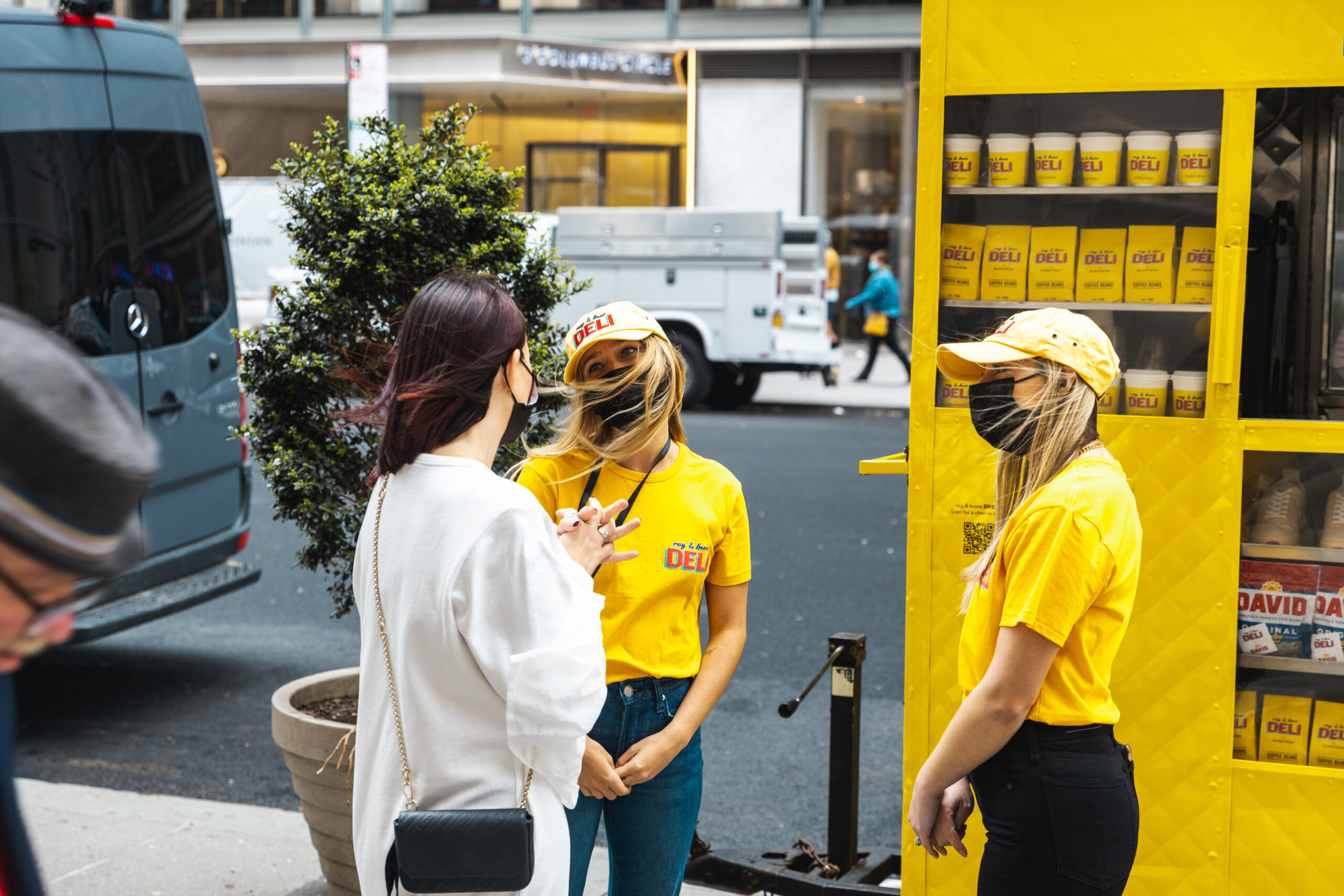
Times are changing fast, and your marketing strategies need to change with them. Consumers aren’t won over by glittery commercials or sultry radio ads.They understand how products work, and what they want from a brand.
Modern consumers have access to a wealth of information, and aren’t going to fall for cheap ploys. You need to speak to them directly, show them respect, and win them over with proven marketing tactics.
That’s why it’s time to try something new. When traditional marketing fails, the world of guerrilla marketing usually has an answer. In this case, that answer is: Street Marketing
Street marketing is an alternative way to market the products or services your business is offering. With print media dying and television ad spots stretching budgetary limits, sometimes it’s best to think outside of the box. So does this mean delving into the digital world of social media marketing? Not exactly.
While digital and social media marketing is incredibly useful, it is also incredibly oversaturated. Today’s consumers are used to seeing ads line the sides of their facebook and instagram, and have learned to tune them out.
Street Marketing is exactly that: marketing on the street. No, not big billboards or ads on the side of buses. Street marketing involves fliers, posters and coupons, handed directly to the consumer. This should be done by someone knowledgeable about the business, and the reason for that is simple.
Don’t hire just anyone to hand out a flyer or coupon. Have someone who can engage customers on their level, and answer questions they have about the product or service. This is the advantage of street marketing.
With street marketing you have the opportunity for clear and instant feedback. Without even trying a product, customers can let you know what they think about certain aspects. Two major aspects they could give feedback on is price and appearance.
With a flyer or coupon, you are showing the price of the product or service to the customer. Make sure to closely study their reaction. Do they laugh at the idea of paying that much? Do they question why the price is so low? Without lowering confidence in what you are selling, try to gauge where your price falls. From here, you can make adjustments.
It can be difficult to place a value on certain products or services without speaking to customers first. In this way, you get a feel for what the people think, and what their budgets can account for. Overpricing a product can doom it to sit on shelves, while underpricing can cause irreparable damage to your bottom line. It’s important to take the time, use the feedback, and use street marketing to find out what works best.
Another aspect you can receive criticism on is the appearance of the product, or even the flyer. Does the potential customer find the flyer visually appealing? Do they look at the flyer with confusion, or disgust? Again, monitoring their reaction during the entirety of the interaction is vital.
Now, what about the product? Ask a couple of questions if they have the time. Do you enjoy the look of the product? Does this look like something you would spend money on? What do you dislike? All of these can help influence future design decisions.
There isn’t much left to do but begin the strategy for your street marketing campaign. Decide what form of physical handout you will have, what will go on it, and who will handle the direct customer interaction. Not only is this method incredibly cost effective, but it has been proven to be very efficient. Get the feedback you want now, and optimize your business’s output ability today!

“The purpose of life is to live it, to taste experience to the utmost, to reach out eagerly and without fear for newer and richer

It’s been a big year here at Food Truck Promotions. With the holidays on the horizon and the new year quickly approaching, we’ve been looking

Why UGC is a Key to Successful Modern Marketing If you are interested in modern marketing, you already know that the advertising world has dramatically